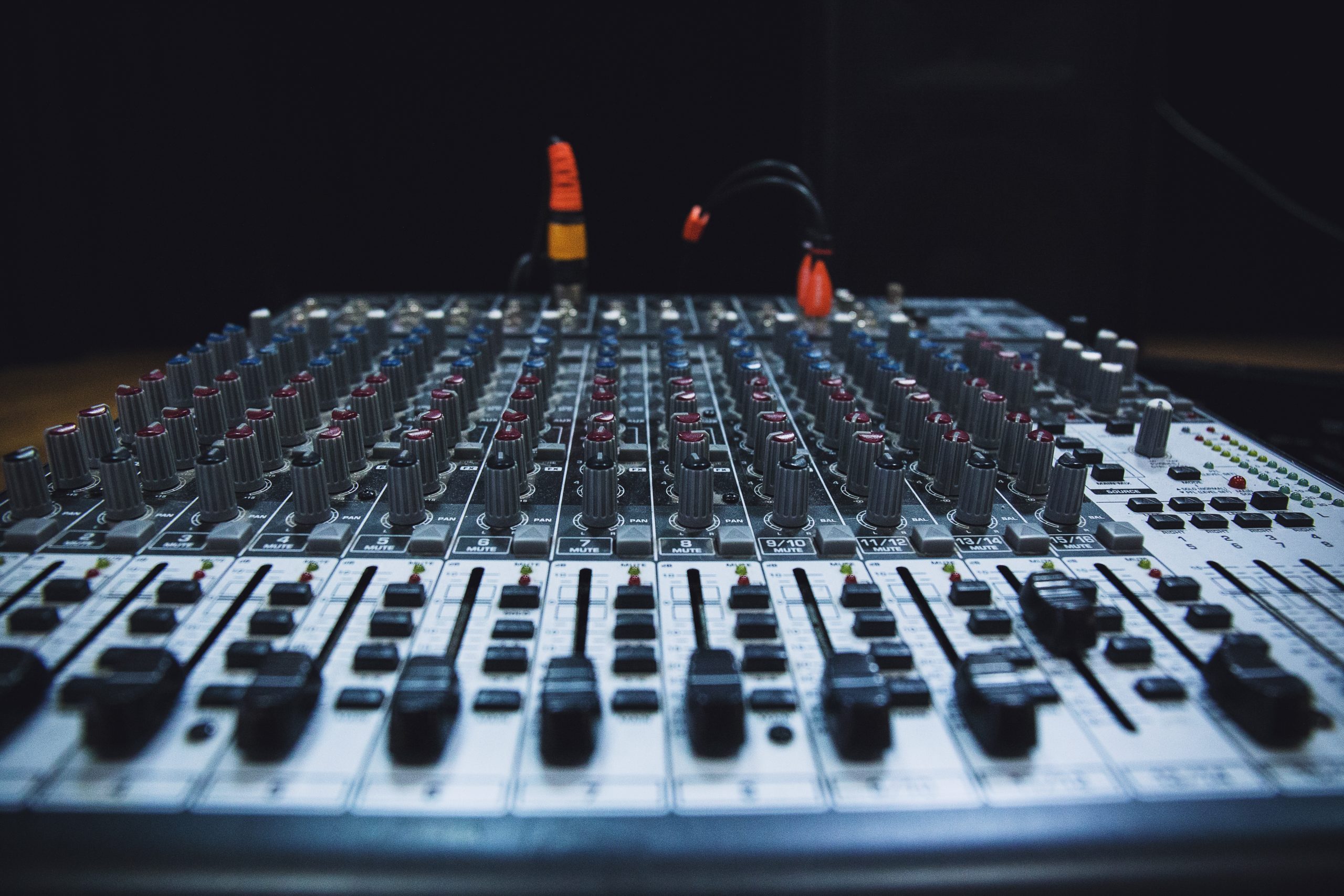The human voice, as an instrument, is probably the oldest, most dynamic, and sonically diverse sound source in existence. In terms of sound reinforcement, it is also a signal that needs a substantial amount of “reinforcing.”
Additionally, and perhaps this goes without saying, a clear, intelligible vocal is paramount to a great mix. Nothing will kill the audience’s enjoyment of and the vibe of a performance faster than if the vocal is buried or not discernible in the mix. So let us look at some strategies and ideas that will help our vocals be spotlighted as they should be.

Microphone Choice
Let’s start at the source. Matching a vocalist to a microphone that compliments their unique voice and provides the proper off-axis rejection will yield more efficient and musical results than anything else applied downstream of the signal. Now, this can be tricky as there are many choices to pick from, and budgets can certainly play a role. However, if there is an opportunity to try out a few different mics, then go for it. In the end, be sure that it is one that both you and your vocalist(s) feel comfortable with. Listed below are a few popular choices and some characteristics about them.
Shure SM58: This is the quintessential vocal mic of choice. Rugged and cost-effective ($100.00), the 58 is likely the most popular live vocal mic worldwide. And for a good reason! Its cardioid pattern provides a predictable solid frequency response with good rejection at 180 degrees off-axis. The off-axis rejection allows for plenty of gain before feedback in the main PA. (A close cousin to SM58, the Beta58, offers a super-cardioid pattern.) The 58 is somewhat tolerant to variations in distance from the source to the mic, but it does function best when within an inch or two of the sound source. As with any directional mic, it does exhibit a proximity effect that can be compensated for with a high pass filter.
Shure KSM9 or Neumann KMS105: (MSRP starting at $699.00) If you’re looking for something a bit more forgiving to variations in distance to the mic, these might be some choices to consider. With larger pickup patterns than their dynamic counterparts, these condensers are less sensitive to performer movement. However, the flip side of that is that there may be less isolation of other stage sounds. Both models are available in multiple polar patterns. These mic’s transducers offer extended frequency response in the upper register giving them additional range for capturing delicate and detailed harmonics.
Audix OM5: (MSRP $195.00) A dynamic transducer can be a bit of a “secret weapon” if vocal isolation is critical. The hyper-cardioid pattern is super tight, ignoring all signals but those directly on axis with a slight pickup tail at 180 degrees. While this mic doesn’t allow for much performer movement, it might be a good choice on loud stages.
Gain Structure
After the vocal has been output from the mic, it’s time to maximize the efficiency of the signal through our console; in other words – setting up the gain structure. Beginning with the mic preamp, be sure to add enough gain so the vocal input is well above the console’s noise floor. I try to shoot for a range that is between 3dB below and above line level. I find this leaves enough headroom for the dynamics of the vocalist to get loud and deliver the energy of the loudest portions of the performance while keeping the preamp out of clipping.
After the preamp level has been sorted, I use the following approach to set up my console’s input fader level. First, turn the main output bus faders and all input faders all the way down. Now imagine that the average or nominal level of the mix is the 0 mark on the input faders. To have the vocal sit on top of the mix, push the lead vocal fader up to approximately +3 to +6. Visually, with 0 as our average show level, our vocal now sits just above that. If there is more than one vocal, bring these faders up as well. While the vocalist is singing, bring up the main output bus until you achieve the desired vocal show level. Hopefully, this puts your master output somewhere around 0. (If your master is way above or below zero to achieve show level, there likely needs to be some PA adjustments. This is a bit beyond the scope of this writing.)
With the vocal inputs and master faders in place, add in the rest of the elements of the mix. I like to begin with inputs that have the lowest stage volumes first. If you are careful not to overwhelm the vocal as other inputs are added, this should ensure that the vocal stays atop the mix. Often during soundcheck, I will mute everything but the vocals and have a listen to a chorus or some point in the performance where many of the vocalists are singing. This allows me to easily check and get a feel for the balance between all the vocal inputs.

High Pass Filters
These filters are a powerful and effective tool for controlling the low end of the mix. If your console affords you adjustable HPFs, you can tailor the low frequencies of each of your vocals based on the respective ranges. (i.e. soprano, alto, tenor, bass). For a male vocal, aim for a filter around 100-125Hz. For the ladies, perhaps a bit higher – 110-130Hz. Just be careful not to go too high, or you unnaturally thin the vocal. Having the high passes in place correctly will help reduce hard plosives, proximity effect, and other extraneous low-frequency energy from the stage. Often, with the proper vocal mic choice and good gain structure, this is the one equalization I’ll use on the vocal channel.
Other Input Channel Processing
It may be desirable to add a few other bits of processing to our vocal channel to help it sit properly in the mix. Remember, though that the shortest signal path with the least amount of processing will sound the most natural.

Compression
Inserting a small amount of compression can help tidy up some of the more extreme dynamics of the vocal performance. I typically don’t use compression ratios high than 3:1 or so for a vocal. I like to be able to control the levels with mostly with the input faders. (That’s why they call it mixing, wink wink.) For attack and release times, I go for a medium attack time and fairly quick release.
Equalization
Subtract. Subtract. Subtract. If you do find that, there is a frequency range in the vocal that needs an adjustment. Shoot for removing what doesn’t belong rather than boosting. This tends to sound more musical and will reveal the good sonic bits of the input once the unwanted is out of the way. (ie. if the vocal is excessively “nasally” or “honkey,” a slight reduction at 1-3 thousand cycles will be helpful.)

De-essing
This is really a combination of the two previously stated processes. Occasionally, you may have a vocal that contains a good helping of “fricative” energy. This will cause the vocal to be overly sibilant on T’s and S’s and such. A de-esser can be used to target and reduce the offending frequencies when they are above the desired threshold. Typically this is between 5kHz and 8kHz.
Adding Dimension and Time Based FX
After the dynamics and tones of our vocal are sorted, let’s add some space and dimension to our vocal. Remember to be tasteful and true to the genre of music that you are mixing when doing so.
Reverb
For reverbs, I prefer a darker plate style with decay times between 1 and 1.5 secs. These times are short, comparatively speaking. I like to accentuate that with some pre-delay on the reverb unit, usually 20-30ms. This ensures there won’t be long reverb decays robbing the vocal of intelligibility but still allow for plenty of dimensions.

Delays
Adding some short delays to the vocal can also add some depth to the vocal in the mix. Try using delay times that match a quarter or eighth note of the song’s tempo. (A quarter note delay time in milliseconds = 60,000/song tempo, an eighth will be 1/2 of that time.) Don’t go crazy with feedback or repeats. Usually, 1.5 to 2 repeats are plenty. I will typically turn up the aux send for the delay until it becomes noticeable as a distinct echo, reducing that level by about ten percent. That should land it in the right place for perceived dimension without being intrusive. (For some additional dimension fun, try sending a pinch of your delay return channel to your vocal reverb.)
Specials
Of course, your show may require some additional special effects to put the finishing touches on the mix. These can be handled on a case-by-case basis and may include things like “lo-fi” or distortion effects, distinct echoes of particular words, and chorus/doubling effects.
Conclusion
Be sure that vocal is loud and clear, and have fun! Happy mixing!
